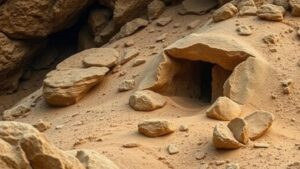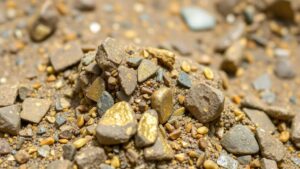The Science of Gold Flow Patterns in Rivers and Streams
The Science of Gold Flow Patterns in Rivers and Streams
The study of gold flow patterns in rivers and streams is crucial for understanding not only the distribution of this precious metal but also the underlying hydrological and geological processes that govern its movement. This article delves into the factors influencing gold flow patterns, the mechanisms of deposition, and their practical implications for mining and environmental management.
Understanding Gold Flow Patterns
Gold flow patterns in waterways are influenced by a variety of physical factors including water velocity, riverbed composition, and the morphology of the river itself. Gold, being denser than most other materials, tends to settle in specific areas known as depositional zones. These zones can be identified through the study of the physical characteristics of the streambed and the dynamics of water flow.
Key Factors Influencing Gold Flow
Several factors impact where and how gold is deposited in rivers:
- Water Velocity: Faster flowing water has greater energy and can carry heavier particles longer distances. When water velocity decreases, these heavier particles, including gold, start to settle.
- Riverbed Composition: Variations in the riverbed material can influence where gold is deposited. For example, gravel and larger rocks can act as barriers that trap gold particles.
- Stream Bed Morphology: Meanders, pools, and eddies can create zones of low velocity, serving as excellent locations for gold deposition.
Mechanisms of Gold Deposition
Gold deposition occurs primarily through three mechanisms:
- Settling: As water slows down, gold particles settle out due to their weight. This process is commonly observed in calm areas of rivers such as behind boulders or in slow-moving pools.
- Flocculation: Smaller particles tend to clump together, forming larger masses that can easily settle as the water slows, particularly in back eddies or shallow areas.
- Concentration: Natural processes, such as the action of water on sediment, can concentrate heavier minerals, including gold, in particular locations.
Case Studies of Gold Flow Patterns
Several case studies illustrating the science of gold flow patterns can provide insights into practical applications. For example, studies conducted in the Klondike region of Canada have shown that understanding past glacial movements and current stream dynamics is essential for effective placer mining. By employing techniques such as sediment sampling and laser scanning, researchers have mapped gold deposits with remarkable accuracy.
Another example can be found in the California Gold Rush, where miners initially sought gold from rivers without understanding underlying flow patterns. As they learned to identify key depositional zones, productivity increased significantly.
Real-World Applications
The implications of understanding gold flow patterns extend beyond mineral extraction. are essential for:
- Environmental Management: Knowing how gold and other pollutants move through water systems can inform strategies for water quality management, particularly in ecosystems impacted by mining.
- Resource Exploration: Geologists utilize flow pattern science in the exploration of potential gold deposits, enabling them to target areas where gold accumulation is likely.
Conclusion and Actionable Takeaways
In summary, the science of gold flow patterns in rivers and streams is deeply rooted in hydrology and geology. Understanding how various factors influence the transport and deposition of gold not only aids in efficient mining but also enriches environmental strategies to protect water resources.
As an actionable takeaway:
- Miners and explorers should invest in modern mapping technologies and hydrological studies to enhance their understanding of river systems.
- Environmental agencies can integrate knowledge of gold flow patterns into their monitoring programs to mitigate pollution and conserve aquatic ecosystems.


